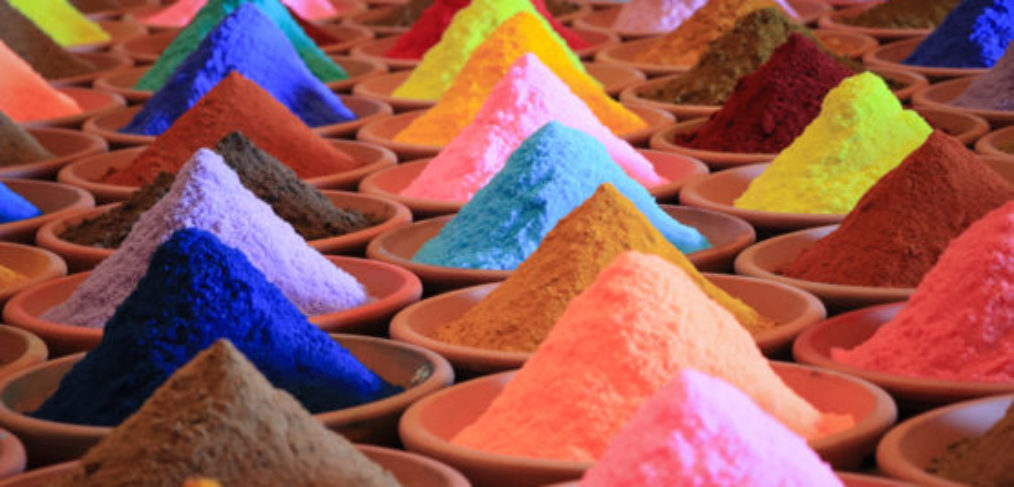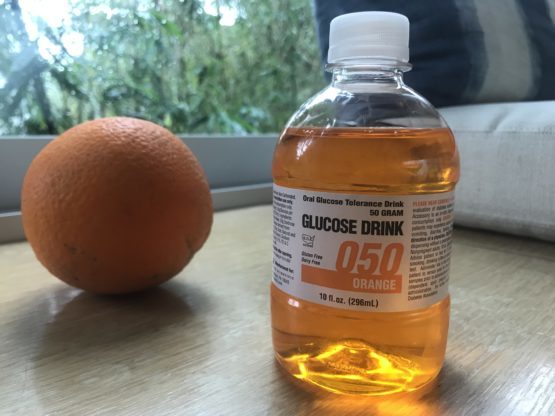Care For Some Dye with That Glucose?

Lovely array of color, isn’t it?
Perhaps to look at, but not so lovely to think that coloring like this, often ends up in our food and drinks as well as personal care products.
Food dyes are chemical substances that were developed to enhance the appearance of food by giving it artificial color. People have added colorings to food for centuries, but the first artificial food colorings were created in 1856 from coal tar. Nowadays, food dyes are made from petroleum(1).
Avoiding items containing dyes is something we can all benefit from, but what do we do if it comes in something our doctors give us?
And how many of us go to the doctor’s office and listen to what they say, no questions asked?
I’ve been the squeaky wheel in this situation just as much as when I’m asking food-related questions when dining out for quite a while; unfortunately, there are far too many things left unspoken that we need to know about and unless we are willing to get a little uncomfortable, often there is potential risk.
As I’ve been sharing snippets of my pregnancy journey with you, I thought it worthwhile to write a post about a recent perfect example of just this situation: the gestational diabetes test.
I have no reason to fear that this was a risk for me, given the manner in which I choose to eat, however, given that this was a non invasive, no risk test involving nothing more than a blood sample, I had no issue with my doctor performing it.
The test is generally given between the 24th and 28th week of pregnancy (2); if you have had gestational diabetes before, or if your health care provider is concerned about your risk of developing gestational diabetes, the test may be performed before the 13th week of pregnancy.
When a woman is diagnosed with this condition, she’s often given a prescription for insulin and she’s far less likely to receive accurate nutritional advice, unless she’s under the care of a functional medicine OB, to steer her in the direction of managing this with food (what a concept) rather than having to rely on a mediation which the unborn baby is going to receive as well.
While gestational diabetes usually goes away after the baby is born (3), they have an increased risk for type 2 diabetes later in life as well as greater likelihood of being obese as a child or teen, and is more likely to develop type 2 diabetes later in life too.
So, valid test, and again, while there was no real concern on my part, why not do it?
It was the protocol I had an issue with.
At the second to last visit, the receptionist handed me a 12 oz plastic bottle containing an orange liquid, which struck an alarming resemblance to Gatorade.
“Oral Glucose Tolerance Drink” read the label, and I immediately looked for the ingredient panel:
Water, dextrose (same molecular formula as glucose), artificial flavors, sodium benzoate, FD&C Yellow.

Obviously, glucose would be needed as the test is designed to measure the body’s response to ingesting this type of sugar as a determining factor as to whether one has the condition.
I remembered doing a very similar test back when I was studying exercise physiology; we used a pure glucose for the same protocol, although in that case it was to measure the response demonstrated by athletes rather than pregnant ladies.
So why would this test be any different? Couldn’t a non-GMO, pure dextrose sugar be used instead?
Bad enough I’d have to ingest 50grams of pure sugar on its own, so why add fuel to the fire with the yellow dye and sodium benzoate, a widely used food preservative?
Granted, the amounts might be minuscule, but it’s the principle that rubbed me the wrong way.
I decided to call the office to ask.
I explained that I preferred not to ingest dye and additives. Sodium benzoate, for example, is associated with sodium benzoate has been associated with side effects such as confusion, decreased urination, headaches, arrhythmia, appetite loss, muscle pain or cramps and nausea (4).
And the dye? Yellow 5 is banned in Austria and Norway, and other European countries have issued warnings about their possible side effects. It is still freely and extensively used in the US, however (5).
No, thank you.
I told the receptionist I would prefer to do the test using plain glucose (non GMO corn-derived glucose is easy to find. Not that this is a good thing to consume with any regularity, but for the one circumstance of the test, preferable to glucose plus dye plus preservatives.)
She asked me to hold and after a brief pause, returned and advised that I must indeed drink this untoward beverage, but that I could feel free to add a squeeze of lemon to alter the flavor.
Right.
I would still be consuming the dye and preservatives though.
Completely missed the point.
In the end, I emailed the doctor directly, and she replied I could certainly do the test using the plain glucose.
Which I did and no, I do no have gestational diabetes.
I did however, feel quite nauseated at consuming 50 grams of sugar on its own in one feel swoop.
We shall see what other interesting test suggestions come up along the way, and I will certainly share as I go.
Update: currently at week 28, the first of the third trimester, and feeling fantastic!

Exercising at a lower heart rate of course, marveling at the changes that already have occurred, and laughing at myself for feeling winded when climbing up the stairs as well as creating my own new pace at masters: pregnancy pace.
Next up on the blog series, more on how I’m shifting my daily exercise routine; it’s based on what I’ve been doing for the past 30+ years, with just a bit of modifications.
What my body was already used to, since birth and without adding something new. Not going to start MMA any time soon!
Also in the line up, the impact of meditation on pregnancy and what I’m learning as we explore different options for our birth plan.
Take away from this post: don’t be afraid to ask questions.
Don’t take my post as medical advice; rather, if something just doesn’t make sense or you don’t get an answer that demonstrates the doctor has listened, don’t hesitate to seek an OB who may have a more functional medicine background or at least a more holistic approach.
We’re doing just that!
(1) https://www.healthline.com/nutrition/food-dyes
(2) https://www.webmd.com/diabetes/gestational-diabetes-guide/pregnancy-diabetes
(3) https://www.cdc.gov/diabetes/basics/risk-factors.html
(4) https://www.livestrong.com/article/525531-facts-on-sodium-benzoate/
5) https://www.livestrong.com/article/370945-health-effects-of-yellow-5-food-coloring/





